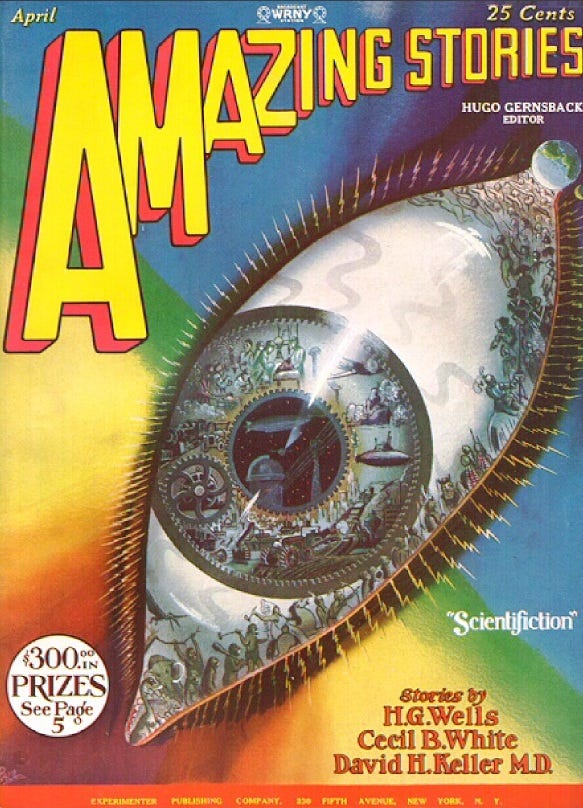The original term was scientifiction, not science fiction. The expression made its debut in the first issue of AMAZING STORIES in April, 1926. The fellow behind the magazine, its editor and sometimes writer, was Hugo Gernsback, a man with a big vision. AMAZING STORIES was not his first magazine, he’d already had several others including, SCIENCE AND INVENTION and RADIO TIMES. He’d even published some “science fiction” (not by that name) in SCIENCE AND INVENTION. But this new magazine was meant to be different. It was the first one devoted solely to this new type of fiction, scientifiction.
At the time, the best of these types of stories were attributed to Jules Verne, H.G. Wells, and Edgar Allan Poe. Personally, I associate Poe with The Raven but I guess…nevermore! Ha-ha. Certainly, those three authors wrote a lot of excellent stories, well worth reading. Before the term scientifiction (science fiction) the common term was scientific romance, romance referring not to love as much as a “romantic sort of tale.” (More on this in a future post.) In his initial editorial for AMAZING STORIES, Gernsback talks about tales from the “big three” being charming romances woven around a scientific thread.
The 1920’s was a bright and promising era and Gernsback notes how different it was from just one hundred years before. Science was now intimately involved in all of their lives. And it was in this brave new world of science that “new romancers” found literary inspiration. Gernsback was also keenly interested in education, especially introducing scientific concepts to youths and children through the medium of story.
We are now nearly one hundred years past the point when this essay was written. And where are we now? We still have science and speculative fiction but they are much changed media. Let us consider momentarily some of the themes currently influencing writers: new behaviors based on social media, including secondary narcissism. Constant threats of war. Rampant crime waves. A dangerous amount of deadly drug deaths. Climate fears. Covid fears. New psychological hang-ups based on lock-downs, especially in children. Increasingly polarized divisions in politics. Failing economies evident by increasing prices, supply chain issues and decreasing monetary values. Gender politics and political correctness gone wild. Alterations to our language usage. And poor science.
I’m not saying it’s all bad news—we do have some great technologies. But the bright and hopeful Buck Rogers future vaporized decades ago. (See my post, “The Gernsback Continuum: Gibson Closes a Door.”) Science fiction is naturally written to current themes and trends. Even New Pulp tries to weave in popular cultural and societal trends as often as possible—those books sell.
So in one hundred years we have shifted from a vision of Utopia to a solid cultural Dystopia. An accident? If so, how could such a thing occur? Did we just miss the mark that badly?
You probably gather that I don’t believe this was a miraculous change based upon the inherent depravity of human beings. Nope. This vehicle was pushed over the edge and in a very deliberate manner.
Science fiction of the 1920’s and 30’s were adventure stories flavored by the impossible. One of AMAZING STORIES’ tag lines was: “Extravagant Fiction Today, Cold Fact Tomorrow.” Today, science fiction writers work in a mine field, carefully trod with the promise of a social media spanking with every hesitant step.
There are no more Hugo Gernsbacks today promoting the useful place for science fiction in society. Or perhaps there are. They just stand behind curtains and give directions. They do not want to be seen because their missions are not savory ones. Is it possible for science fiction writers today to buck current trends and bring back more satisfying adventure tales? I think it may be, if you have enough grit.
This is the Rocketeer signing off for today.





